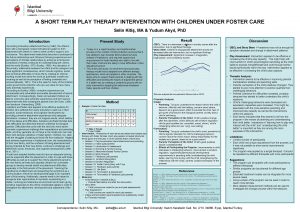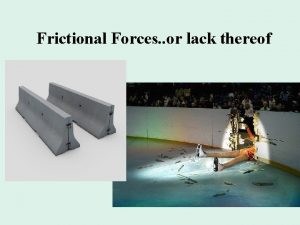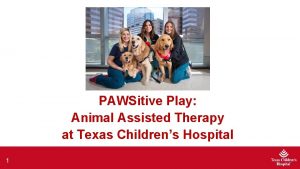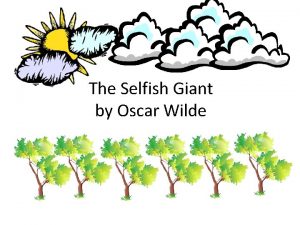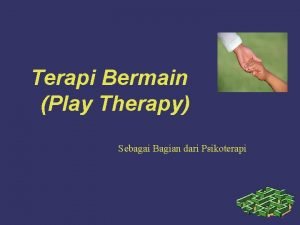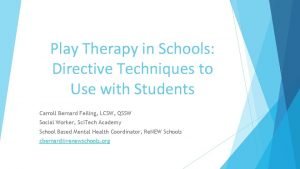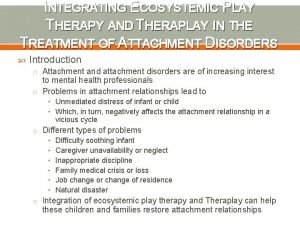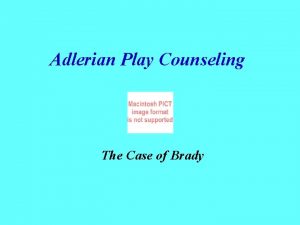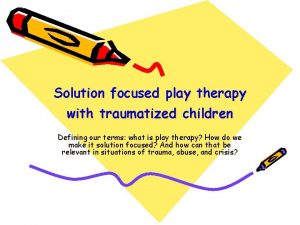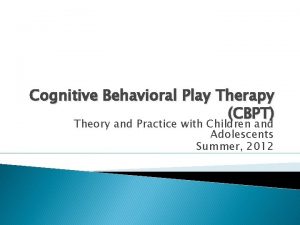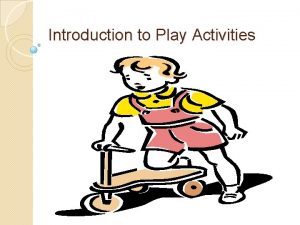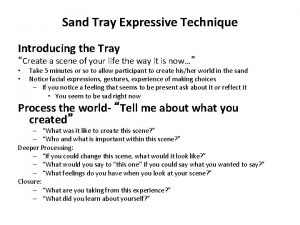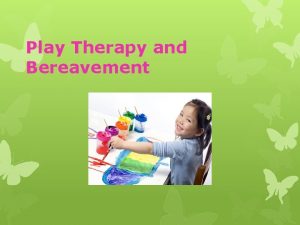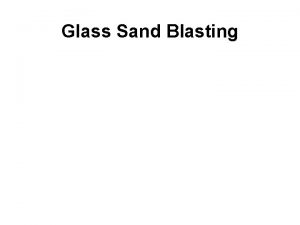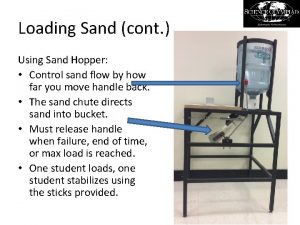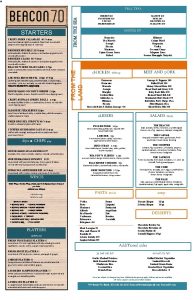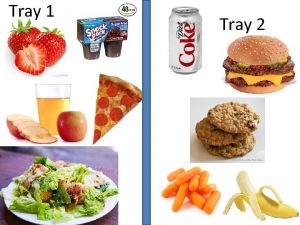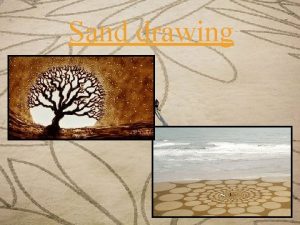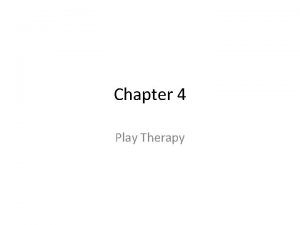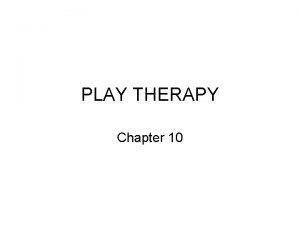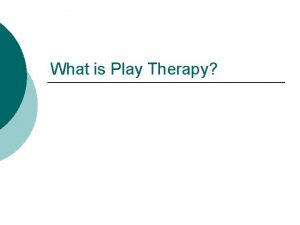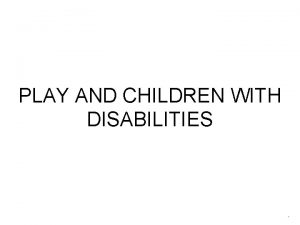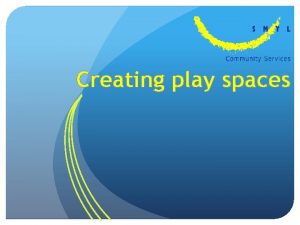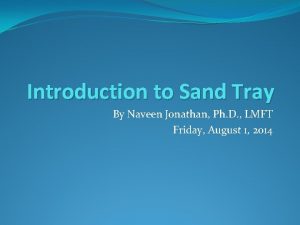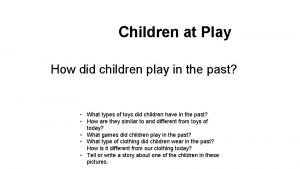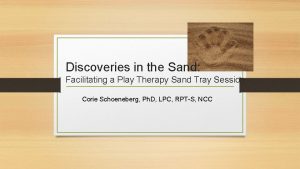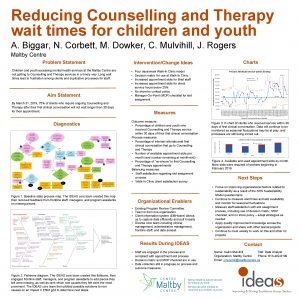Counselling children Art sand tray and play therapy




















- Slides: 20

Counselling children Art, sand tray and play therapy

Art therapy with children

Sand tray therapy with children

Session with parents or parent

Session with parents

Initial session with parents or parent § First session with the parents or parent to get information about the situation that doesn't need to be talked about in front of the child

Parents – initial session § What works well? § What doesn't work well? § Family background § Are parents together § Are parents separated § Are they re-partnered § Step parenting issues § Parenting disagreements § Boundaries § Strengths and talents of the child § Hobbies § Issues with siblings § Issues that brings child to counselling: § emotional § behavioural

Who will benefit from counselling? The parent (s) child / whole family § Assessment of who will benefit most. § What are the issues? § Do they relate to the parenting or surrounding situations between parents § § § § Child’s issues Behavioural Emotional At home At school With friends With separation from parent ?

Child’s emotional signs § Fears: fear of monsters § Nightmares § Fear of new things, fear of going to school, fear of visits etc § General anxiety § Sadness: crying a lot, being clingy at separation of parents, after moving house – loss of friends § Anger and aggression: throwing things, generally angry after certain events, towards certain people, § acting out, destroying toys, hurting siblings, pets etc


Child’s behaviour § Aggressive behaviour: kicking things, destroying things like toys, § hitting or kicking others, siblings friends etc § Bullying others , § acting out at school § Not listening § Not obeying, being disrespectful to others § Back chatting to parent (s) § Not wanting to go to school: being bullied by other kids, § Shyness and feeling anxious about going to school,

Play is therapeutic in itself

What is play and sand tray therapy and how does it work? § Sand tray therapy has been developed by a Jungian therapist over 50 years ago. § She found that this kind of therapy is a non – intrusive, non-judgemental approach to help the child express itself § Play is the natural language of a child § It works often on a symbolic level and lets children work inner and outer conflicts out in a non threatening way

Self directed play – story telling § Figurines are placed in the sand tray § The child either talks or is silently placing figures in the sand moving them around § I ask about the story and who is in the story


How it works § Fears can be externalised as a dragon or monster in the sand tray § Sadness can be expressed by choosing a figurine that looks sad – or by isolating a figure § Anger can safely be expressed (motorbikes or warrior figures often help)




Kids skills § § Kids skills Learning to have courage Learning to challenge fears Turning fears into challenged that can be overcome § Creating support to help challenge fears § Reward system
 Short-term play therapy for children
Short-term play therapy for children Residual chlorine
Residual chlorine Perbedaan rapid sand filter dan slow sand filter
Perbedaan rapid sand filter dan slow sand filter Frictional unemployment
Frictional unemployment Types of molding sand
Types of molding sand Kings play chess on fine grain sand
Kings play chess on fine grain sand Dumb kings play chess on fine grained sand
Dumb kings play chess on fine grained sand Objectives of play therapy
Objectives of play therapy Psychodynamic and humanistic therapies have in common
Psychodynamic and humanistic therapies have in common Bioness bits cost
Bioness bits cost Humanistic therapies aim to boost
Humanistic therapies aim to boost Texas children's hospital
Texas children's hospital Where did the children go to play every afternoon?
Where did the children go to play every afternoon? Contoh play therapy
Contoh play therapy Play therapy examples
Play therapy examples Ecosystemic play therapy
Ecosystemic play therapy Alderian play therapy
Alderian play therapy Floortime play therapy
Floortime play therapy Solution focused play therapy
Solution focused play therapy Cbpt training
Cbpt training Different types of play for toddlers
Different types of play for toddlers
